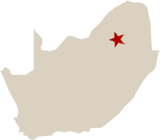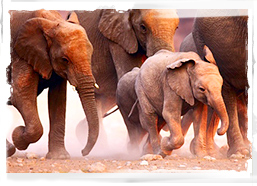An Introduction to South Africa
Much of the area now forming the Republic of South Africa was occupied by Bantu-speaking peoples including the Xhosa and Zulu, when Dutch traders landed at its southern tip in 1652 and founded Cape Town as a stopover point on the spice route to the Far East. The area was seized by the British in 1806 and many Dutch settlers (the Boers) trekked north to found their own republics. After the discovery of diamonds (1867) and gold (1886) in the area, settlers' squabbles intensified, culminating in the Boer War (1899-1902) and the formation of the Union of South Africa. See full country profile.Latest Research News from Africa
1 current African job:

GOVERNMENT: Democratic Republic
AREA: 1,219,090 sq km
POPULATION: 49,004,031 (July 2011 est.)
MAJOR LANGUAGE: There are currently eleven: Afrikaans, English, Southern Ndebele, Northern Sotho, Southern Sotho, Swazi, Tsonga, Tswana, Venda, Xhosa, Zulu

Some business and general info
The Market Research Industry
Trade and Industry in South Africa
Queen of Diamonds: One of the largest diamonds ever mined was the Cullinan Diamond, found in South Africa in 1905. It weighed 3,106.75 carats (621.35 grams) uncut, and was cut into the Great Star of Africa (530.2 carats), the Lesser Star of Africa (317.4 carats) and 104 other diamonds of nearly flawless colour and clarity. They now form part of the British Crown jewels.
Larger diamonds have been discovered since, all of them in South Africa.
Go to next country
Much of the area now forming the Republic of South Africa was occupied by Bantu-speaking peoples including the Xhosa and Zulu, when Dutch traders landed at its southern tip in 1652 and founded Cape Town as a stopover point on the spice route to the Far East. The area was seized by the British in 1806 and many Dutch settlers (the Boers) trekked north to found their own republics. After the discovery of diamonds (1867) and gold (1886) in the area, settlers' squabbles intensified, culminating in the Boer War (1899-1902) and the formation of the Union of South Africa.
In 1931 the union was effectively granted independence from the UK. In 1948, the National Party was voted into power and instituted a policy of apartheid, which established three racial classes: white, coloured (people of'Asian or mixed racial ancestry), and black, with rights and restrictions for each. The system lasted more than four decades despite international sanctions and boycotts, withdrawal of investments, protests and resistance. The latter were often led by the African National Congress (ANC), whose imprisoned leader Nelson Mandela eventually negotiated with F.W. de Klerk in 1993 for a peaceful transition to majority rule, resulting in an ANC-led government - the party has been in power ever since.
GDP: $524 billion (2010 est.)
Religions Christian 79.7% including: Zion 11.1%, Pentecostal/Charismatic 8.2%, Catholic 7.1%, Methodist 6.8%, Dutch Reformed 6.7%, Anglican 3.8%, other Christian 36%. Muslim 1.5%, other 2.3%, unspecified 1.4%, none 15.1% (2001 census)
Currency: Rand (ZAR) - GBP 1 = ZAR 10.83
Telephone Code: +27
South African Marketing Research Association
The South African Chamber of Commerce and Industry
BBC Country Profile
MR Association(s):
South African Market Research Society
South Africa's research market is the 22nd largest in the world, recording a turnover of $156m in 2009. However, that's a net decline of 19.1% on 2008 numbers, where turnover was $198m. 86% of research carried out is domestic, the remainder international, while 90% is quant-focused.
Source: ESOMAR
South Africa has a mixed economy with high poverty and a low GDP per capita. The UN classifies South Africa as a middle income country with an abundant supply of resources, along with well-developed financial, legal, communications, energy and transport sectors - the country also has the 18th largest stock exchange in the world. However, unemployment is high and an outdated infrastructure has hindered growth in the economy.
Advanced development tends to be restricted to Cape Town, Port Elizabeth, Durban, Pretoria and Johannesburg. That said, there have been some key marginal areas that have seen rapid growth of late.
In 2010, South Africa exported gold, diamonds, platinum and other produce to China and the USA, as well as other Asian and European customers. Exports had an estimated value of $76.8bn. In the same year, imports were worth slightly more at an estimated $77.04bn, and were made up of machinery, chemicals, foodstuffs and various other goods.
Email me:
laurence@mrweb.com

